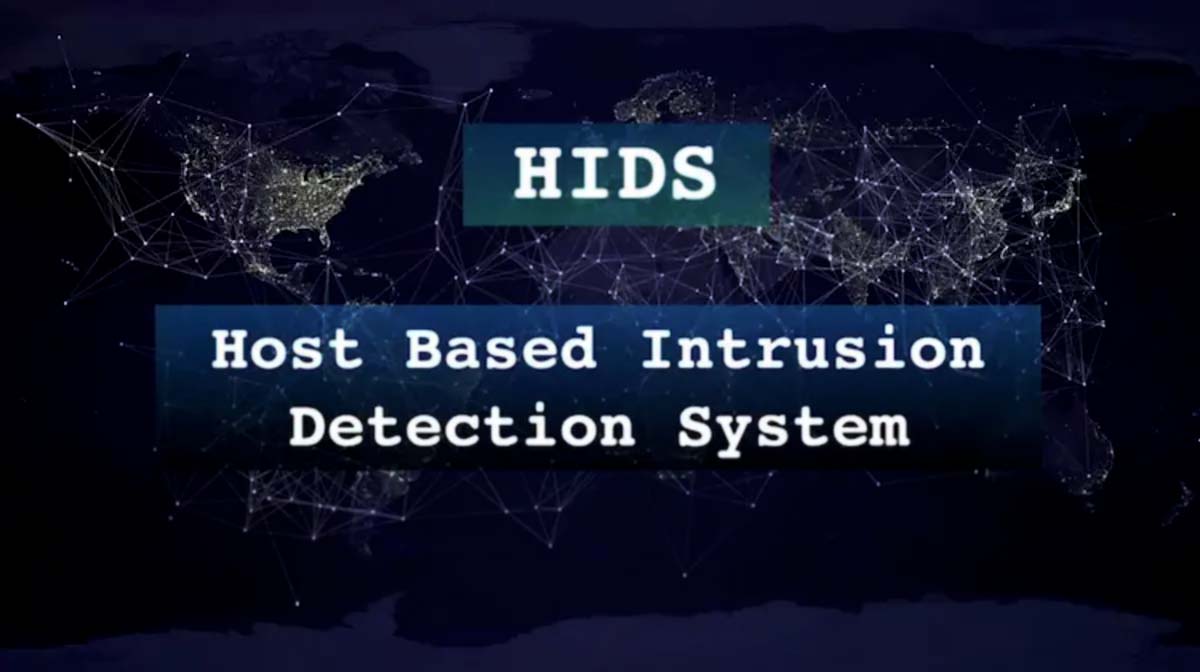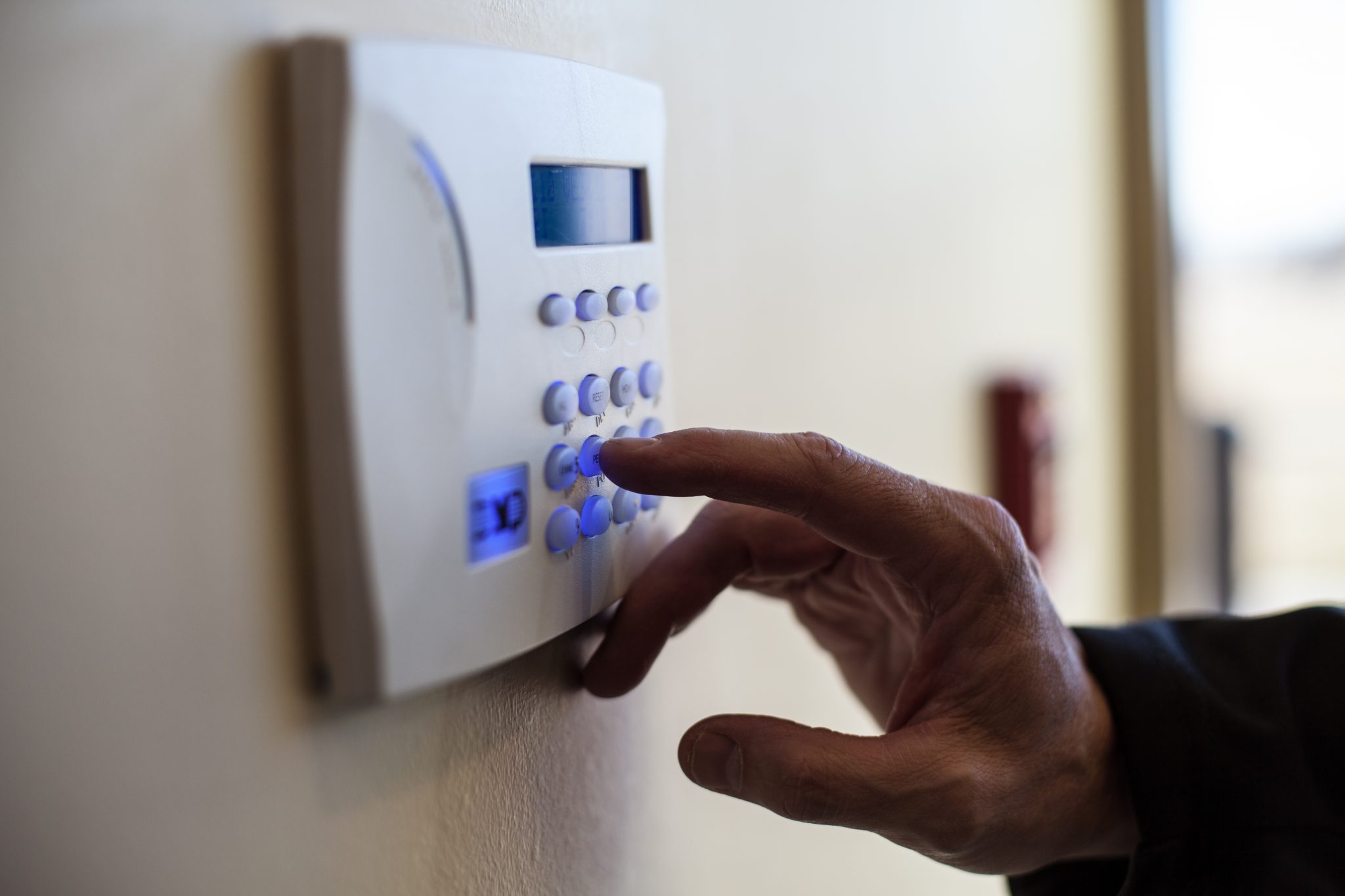Home>Home Security and Surveillance>What Does A Host-Based Intrusion Detection System Often Rely Upon


Home Security and Surveillance
What Does A Host-Based Intrusion Detection System Often Rely Upon
Modified: March 21, 2024
A host-based intrusion detection system commonly depends on home security and surveillance measures to detect and prevent unauthorized access and malicious activities.
(Many of the links in this article redirect to a specific reviewed product. Your purchase of these products through affiliate links helps to generate commission for Storables.com, at no extra cost. Learn more)
Introduction
In today’s digital landscape, ensuring the security and safety of our homes has become more important than ever. With the rise in cyber threats and physical intrusions, homeowners are increasingly turning to home security and surveillance systems to protect their valuable assets and loved ones. One crucial component of any comprehensive home security setup is a host-based intrusion detection system (HIDS).
A host-based intrusion detection system is a critical tool that helps monitor and identify potential security breaches within a single device or computer. It acts as a second line of defense alongside firewalls and antivirus software, offering an additional layer of protection against sophisticated cyberattacks and unauthorized access attempts.
In this article, we will explore the definition of a host-based intrusion detection system, understand its components, discuss its importance, explore common techniques it employs, as well as examine its limitations and challenges. We will also compare this system to other detection systems to give you a comprehensive understanding of its capabilities and limitations.
Key Takeaways:
- A host-based intrusion detection system (HIDS) acts as a digital security guard for individual devices, detecting potential breaches and protecting against known and unknown attacks in real-time.
- While HIDS provides crucial protection, it has limitations such as blind spots and false alerts. Combining HIDS with other security systems creates a stronger defense against threats.
Definition of a host-based intrusion detection system
A host-based intrusion detection system (HIDS) is a security measure designed to detect and respond to unauthorized activity and malicious behavior on an individual device or computer. Unlike network-based intrusion detection systems (NIDS) that monitor network traffic, a HIDS focuses specifically on the activities and processes happening within a single host or device.
The main objective of a HIDS is to identify abnormal or suspicious behavior that may indicate a potential security breach. It does this by continuously monitoring various aspects of a host, including file systems, operating system logs, user account activity, and network connections. By analyzing these data points, a HIDS can detect potential security incidents, such as unauthorized access attempts, malware infections, and unusual system activity.
HIDS software typically operates in one of two ways: it can operate as a standalone solution, where it is installed directly on the host it is protecting, or it can operate as an agent within a larger security framework, reporting its findings to a centralized management console. Regardless of the deployment method, the primary goal of a HIDS is to detect anomalies and raise alerts when suspicious activity is detected.
To achieve its detection capabilities, a HIDS relies on various techniques and mechanisms. These include signature-based detection, which compares observed behavior against a database of known attack patterns, and anomaly-based detection, which identifies deviations from normal system behavior. Additionally, a HIDS may leverage behavior-based detection, which involves tracking patterns of system activity and user behavior to identify potential threats.
Overall, the purpose of a host-based intrusion detection system is to provide an additional layer of protection to a device or computer by actively monitoring for signs of malicious activity. By detecting and responding to potential security breaches in real-time, a HIDS plays a vital role in safeguarding sensitive data, preventing unauthorized access, and maintaining the integrity of the host system.
Components of a host-based intrusion detection system
A host-based intrusion detection system (HIDS) comprises several key components that work together to detect and respond to potential security breaches on an individual device or computer. These components include:
- Sensor Agents: Sensor agents form the core of a HIDS. They are responsible for collecting data from various sources within the host, such as file systems, system logs, and network connections. These agents continuously monitor these data sources, capturing information about system events, user activities, and network traffic.
- Anomaly Detection Engine: The anomaly detection engine is the brain of a HIDS. It analyzes the information collected by the sensor agents to identify patterns and behaviors that deviate from normal operations. By establishing a baseline of “normal” behavior, it can detect any anomalies that may indicate a security breach.
- Signature Database: A signature database contains a vast collection of known attack patterns and malicious signatures. The HIDS compares the observed behavior against this database to identify matches and potential security threats. Signature-based detection is particularly effective against known malware and attack techniques.
- Alerting Mechanism: The alerting mechanism is responsible for notifying system administrators or security personnel when suspicious activity or potential security breaches are detected. Upon identifying an anomaly or matching a known signature, the HIDS generates an alert, which can be delivered via email, SMS, or through a centralized management console.
- Logging and Reporting: A HIDS maintains detailed logs of all monitored events and activities. These logs provide valuable information for forensic analysis, incident response, and compliance purposes. Additionally, a reporting feature allows administrators to generate comprehensive reports that provide insights into the security posture of the host.
It’s worth noting that the components of a HIDS can vary depending on the specific software or solution being used. Some HIDS software may incorporate additional features, such as real-time monitoring of system configurations, integrity checking of critical files, and vulnerability scanning. These extra components further enhance the detection capabilities of the HIDS and contribute to a more robust security posture.
Importance of a host-based intrusion detection system
A host-based intrusion detection system (HIDS) plays a critical role in ensuring the security and integrity of individual devices or computers within a network. Here are some key reasons why a HIDS is important:
- Real-time Threat Detection: HIDS continuously monitors the activities and processes happening within a host in real-time. This enables it to detect potential security breaches as they occur, allowing for immediate response and mitigation. By providing real-time threat detection, a HIDS helps minimize the potential damage and impact of an intrusion.
- Detecting Insider Threats: Insider threats, where authorized individuals misuse their privileges or act maliciously, can often go unnoticed by traditional security measures such as firewalls. A HIDS is specifically designed to detect such insider threats, helping to identify unauthorized access attempts or suspicious activities performed by legitimate users.
- Protection Against Known Attacks: With a comprehensive signature database, a HIDS can identify known attack patterns and malicious signatures. This ensures that even well-established attack techniques are detected and mitigated promptly. By keeping the signature database up to date, a HIDS remains effective in protecting against the latest threats.
- Identifying Unknown Attacks: In addition to detecting known attacks, a HIDS can also identify unknown or zero-day attacks. Through anomaly-based detection, it can identify behaviors and patterns that deviate from normal operations, signaling a potential security breach. This proactive approach allows for early detection and response to emerging or previously unseen attack vectors.
- Forensic Analysis and Incident Response: In the event of a security incident, a HIDS provides valuable logs and information for forensic analysis. This aids in understanding the scope and impact of the incident and assists in the investigation. Additionally, the alerting mechanism of a HIDS enables prompt incident response, allowing organizations to take immediate action to mitigate the risks.
- Compliance Requirements: Many industries and organizations have specific compliance regulations that require the implementation of security measures, including intrusion detection systems. A HIDS helps organizations meet these requirements by providing comprehensive monitoring and detection capabilities, as well as detailed logs and reports for compliance audits.
Overall, a host-based intrusion detection system is crucial in maintaining the security and integrity of individual devices or computers. It provides real-time threat detection, protects against known and unknown attacks, aids in forensic analysis and incident response, and helps organizations meet compliance requirements. By implementing a HIDS, homeowners and businesses can significantly enhance their security posture and protect their valuable assets and sensitive data from potential breaches.
A host-based intrusion detection system often relies upon monitoring system logs, file integrity, and network traffic on a single host to detect and respond to potential security threats.
Common techniques used by a host-based intrusion detection system
A host-based intrusion detection system (HIDS) employs various techniques to detect and respond to potential security breaches on individual devices or computers. These techniques are crucial in identifying abnormal behavior and patterns that may indicate an intrusion. Here are some common techniques used by a HIDS:
- Signature-based Detection: This technique involves comparing observed behavior against a database of known attack patterns and malicious signatures. The HIDS scans system events and network traffic for matches with these signatures. When a match is found, it raises an alert, indicating a potential security threat. Signature-based detection is effective against well-known attack techniques and malware.
- Anomaly-based Detection: Anomaly-based detection focuses on identifying deviations from normal system behavior. A HIDS establishes a baseline of normal operations by analyzing historical data and system profiles. It then continuously monitors system events, user activities, and network traffic for any anomalies. Unusual patterns or behaviors that deviate from the established baseline trigger an alert, indicating a potential security breach. Anomaly-based detection is particularly valuable in detecting unknown or zero-day attacks.
- Behavior-based Detection: Behavior-based detection tracks and analyzes patterns of system activity and user behavior to identify potential threats. It establishes normal behavior profiles for users and devices and monitors for any deviations from these profiles. For example, if a user suddenly starts accessing sensitive files or system settings they typically don’t use, it may indicate a compromised account or malicious activity. Behavior-based detection provides insight into insider threats and can detect sophisticated attacks that bypass traditional security measures.
- Heuristic Analysis: Heuristic analysis involves the use of algorithms and rules to detect patterns or behaviors indicative of a security breach. The HIDS analyzes system events, logs, and network traffic in real-time, applying predefined rules and algorithms to identify suspicious activities. Examples of heuristic analysis include checking for unauthorized privilege escalation, unusual code execution, or suspicious network connections. Heuristic analysis helps in detecting previously unseen or emerging attack techniques.
- Integrity Checking: Integrity checking ensures the integrity of critical system files and configurations. A HIDS maintains checksums or hashes of files and periodically checks them against the current state to identify any unauthorized modifications. This technique helps detect malware infections or unauthorized changes to system files, protecting against tampering or compromise.
By leveraging these techniques and combining them with continuous monitoring and analysis, a HIDS can effectively detect and respond to potential security breaches on individual devices or computers. It provides organizations with a proactive approach to identifying and mitigating threats, helping maintain the security and integrity of their systems and data.
Limitations and challenges of a host-based intrusion detection system
While a host-based intrusion detection system (HIDS) offers valuable security benefits, it is not without its limitations and challenges. Understanding these limitations is essential to ensure a comprehensive security strategy. Here are some common limitations and challenges associated with HIDS:
- Blind Spots: HIDS operates within the boundaries of a single host or device. As a result, it may have blind spots and limited visibility into activities occurring outside of the host. It cannot detect attacks or suspicious behavior that exist solely in network traffic or are targeted at other devices. To mitigate this limitation, it’s important to complement HIDS with network-based intrusion detection systems (NIDS) to monitor the overall network traffic.
- False Positives and Negatives: HIDS can generate false positive alerts, indicating potential security breaches when there is no actual threat. For example, legitimate software updates or system modifications may trigger false positive alerts if they are not properly categorized or analyzed. Conversely, false negatives occur when a HIDS fails to detect an actual intrusion or security breach, either due to sophisticated attack techniques or limitations in its detection capabilities. Regular tuning and updating of the HIDS, in addition to continuous monitoring, can help reduce the occurrence of false positives and negatives.
- Performance Impact: Continuous monitoring and analysis by a HIDS can have an impact on system performance, especially when dealing with high volumes of system events and network traffic. This can result in increased resource utilization, affecting the overall responsiveness and efficiency of the host. Careful configuration and optimization of the HIDS are necessary to minimize the performance impact while maintaining effective security monitoring.
- Zero-day Attacks: HIDS relies on signature-based detection and anomaly-based detection techniques. While these techniques are effective in detecting known attack patterns and identifying anomalies, they may struggle with detecting zero-day attacks that exploit previously unknown vulnerabilities. Zero-day attacks are not yet documented or included in signature databases, making them difficult to detect by traditional means. To overcome this challenge, organizations should combine HIDS with other security measures, such as vulnerability scanning and threat intelligence, to identify potential zero-day vulnerabilities and mitigate associated risks.
- Insider Threats: While HIDS can help detect insider threats, it may face challenges in differentiating between legitimate user actions and malicious activities. For example, if a compromised user account is used for unauthorized access, it may be difficult for the HIDS to distinguish it from normal user behavior. Effective classification of user activities and continuous monitoring of user behavior are crucial in mitigating the risks associated with insider threats.
Despite these limitations and challenges, a host-based intrusion detection system remains an essential component of a comprehensive security posture. By understanding these limitations and implementing complementary security measures, organizations can maximize the effectiveness of their HIDS and enhance their overall security defenses.
Comparison of host-based intrusion detection system with other detection systems
When it comes to intrusion detection, there are various approaches available, including host-based intrusion detection systems (HIDS) and network-based intrusion detection systems (NIDS). Each system has its strengths and weaknesses, and understanding their differences is crucial in implementing a comprehensive security strategy. Here’s a comparison of HIDS with other detection systems:
- Host-based Intrusion Detection Systems (HIDS): HIDS functions at the host or device level, monitoring activities and processes happening within a single machine. It focuses on detecting potential security breaches within the host itself, such as file system changes, unauthorized access attempts, or abnormal user behavior. HIDS provides granular visibility into host-level attacks and is effective in detecting insider threats and malware infections. However, it may have blind spots when it comes to monitoring network-based attacks or attacks targeting other devices on the network.
- Network-based Intrusion Detection Systems (NIDS): NIDS operates at the network level, monitoring network traffic for suspicious patterns and activities. It analyzes packets flowing through the network, looking for known attack signatures or abnormal network behavior. NIDS can detect network-based attacks, such as port scanning, unauthorized network access, or malicious traffic. However, it may struggle to provide granular visibility into host-level attacks or detect insider threats that bypass network traffic monitoring.
- Host-based Intrusion Prevention Systems (HIPS): HIPS is an extension of HIDS that not only detects but also actively prevents intrusions and malicious activities. It can take automated actions, such as blocking network connections or terminating processes, in response to detected threats. HIPS provides real-time protection at the host level and can be effective in mitigating security breaches. However, like HIDS, it may have blind spots when it comes to network-level threats or attacks targeting other devices on the network.
- Security Information and Event Management (SIEM): SIEM combines security event log data from various sources, including HIDS, NIDS, firewalls, and other security systems. It correlates, analyzes, and aggregates these events to provide a holistic view of the security posture. SIEM provides centralized monitoring, alerting, and reporting capabilities, allowing organizations to detect and respond to potential security breaches across their entire infrastructure. While HIDS and NIDS focus on detecting and monitoring specific aspects, SIEM provides a broader and more comprehensive perspective, enabling better threat detection and incident response.
- Cloud-based Intrusion Detection Systems: Cloud-based intrusion detection systems leverage cloud infrastructure and machine learning algorithms to detect and respond to potential security breaches. By analyzing large volumes of data and patterns, these systems can identify and mitigate known and unknown attacks, both at the host and network levels. Cloud-based IDS offer scalability, flexibility, and continuous updating of security features. They can complement and enhance the capabilities of traditional HIDS and NIDS solutions.
It’s important to note that these detection systems are not mutually exclusive, and organizations can benefit from implementing a combination of these solutions to maximize their security effectiveness. For comprehensive protection, a layered approach involving a combination of host-based, network-based, and centralized monitoring systems, such as SIEM, can provide a more robust defense against a wide range of threats.
Conclusion
In an increasingly connected world, where both digital and physical threats pose risks to our homes and businesses, implementing robust security measures is essential. A host-based intrusion detection system (HIDS) is a crucial component of a comprehensive security strategy, offering real-time threat detection, protection against known and unknown attacks, and the ability to detect insider threats and malware infections. By continuously monitoring activities and processes within a single device or computer, a HIDS provides an additional layer of defense against potential security breaches.
The components of a HIDS, including sensor agents, anomaly detection engines, signature databases, alerting mechanisms, and logging capabilities, work together to provide visibility into system events, user activities, and network connections. This allows for the detection of abnormal behavior, unauthorized access attempts, and potential security breaches. However, it’s important to note that HIDS has its limitations. It may have blind spots when it comes to network-level threats or attacks targeting other devices on the network. False positives and negatives, performance impact, and the challenge of detecting zero-day attacks are also considerations when implementing a HIDS.
To achieve a comprehensive security posture, organizations should consider combining HIDS with other detection systems such as network-based intrusion detection systems (NIDS), security information and event management (SIEM) solutions, and cloud-based intrusion detection systems. Each of these systems offers unique capabilities and perspectives, enabling better threat detection and incident response.
In conclusion, a host-based intrusion detection system is a vital tool in safeguarding our homes and businesses from potential security breaches. By continuously monitoring and analyzing activities within a single host, a HIDS enhances the overall security posture, enabling organizations to identify and respond to potential threats more effectively. While the limitations of HIDS should be considered, when combined with other detection systems, it forms an integral part of a comprehensive and resilient security infrastructure.
Frequently Asked Questions about What Does A Host-Based Intrusion Detection System Often Rely Upon
Was this page helpful?
At Storables.com, we guarantee accurate and reliable information. Our content, validated by Expert Board Contributors, is crafted following stringent Editorial Policies. We're committed to providing you with well-researched, expert-backed insights for all your informational needs.














